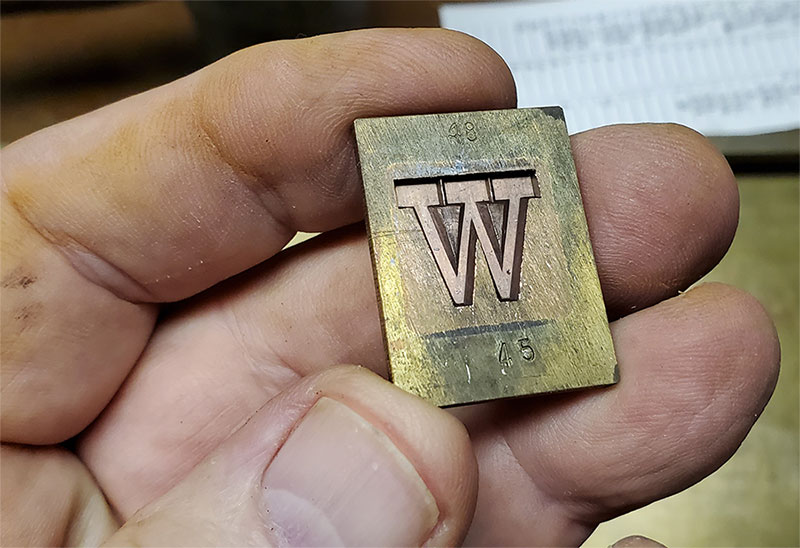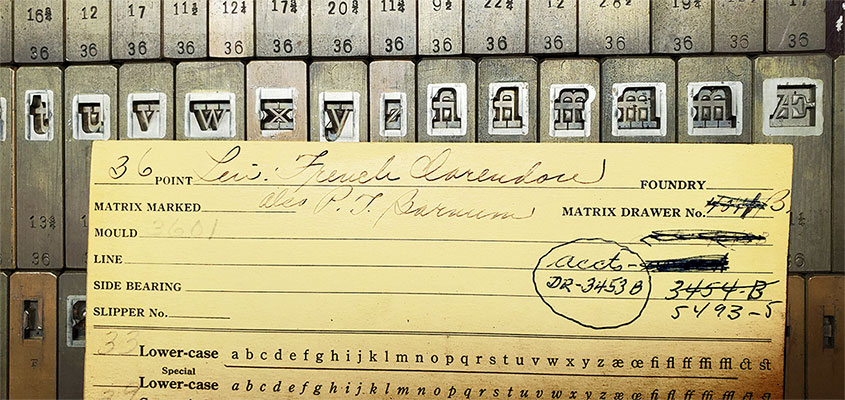So it was early in 2020 an on-line auction showed three parcels which I identified (from the pictures) that they all were 48 pt. P. T. Barnum, cast by American Type Founders. Well, I like the face, fair enough? So I have matrices for casting the font, so shouldn’t I just go to the shop and start casting? In case you don’t know it, doing such a thing would consume a lot of effort and at least two days at the casting machine. I figured if I won the bids for $20 to $40, I would be ahead of the game and at my age, taking the easiest path definitely is my mode of operation.
So my bids went in on the three packages. Two packages contained the caps, figs, and points. The third package contained the lowercase only. Shouldn’t the auctioneer have listed the three as one lot? Of course, but who is to tell an auctioneer how to list stuff? So it was that I won the bid only on the lowercase. Some other guy got a cap font that he could use. I got a font of lowercase which would be practically useless without caps, etc. So my font of lowercase arrived and immediately I was in love with it. I love the feel, look, etc., of type, especially large type cast by ATF. Oh, it’s gorgeous. So what to do?
Somehow my “bucket list” got rearranged and I was heading for the basement typefoundry to seek out the matrices and get a casting project underway. I have over a hundred fonts of matrices which came direct from American Type Founders at the auction of ATF in the 1990s, but P. T. Barnum was not in that lot. But later on another person who did acquire P. T. Barnum opted to put his mats into my safekeeping. I was intending to cast my stuff from the very same mats used for the casting which I had lost the bid on. But to my disappointment, I found I have 18, 24, 30 and 36 point only. Somehow the larger (and smaller) sizes were not in the lot, so my story is about to end? Not quite.






